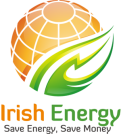Solar Panels Cost Ireland
As electricity prices rise in 2025, Irish homeowners are increasingly asking: how much do solar panels cost, and are they worth it? We break down system costs, SEAI grants, payback timelines, and real-world savings in Ireland.
Solar Powered Ireland – Reduce Energy Costs
With rising energy costs and generous SEAI grants available, solar panels have become one of the smartest long-term investments for Irish homes and small businesses. In this guide, we’ll break down the average cost of solar panels in Ireland, what influences the price, available grants, and how quickly you can expect to make your money back.
| Region | Estimated Annual Output (4 kWp) | Notes |
|---|---|---|
| Dublin | ~3,500 kWh | Cloudier winters, moderate sunlight year-round |
| Wexford / Waterford | ~3,800–4,100 kWh | Sunniest region in Ireland, ideal for maximum solar yield |
| Cork / Kerry | ~3,800–4,000 kWh | Strong performance with southern exposure and mild climate |
| Galway / Limerick | ~3,600–3,800 kWh | Reliable west-coast output, even with more cloud cover |
| Belfast / Donegal | ~3,300–3,500 kWh | Northernmost regions with more overcast days |
Average Cost of Solar Panels in Ireland (2025)
Prices vary depending on roof type, inverter quality, location, and installer.
SEAI Solar Panel Grants (2025)
Homeowners in Ireland can receive up to €2,400 in grant support through the SEAI Solar PV scheme. If battery storage is included, you may also be eligible for up to €1,800 extra.
- €900/kWp for the first 2kWp
- €300/kWp for the next 2kWp (up to 4kWp total)
- Up to €1,800 for battery installation
- Free BER assessment worth €50 after work completion
Grants must be applied for before installation begins and work must be done by an SEAI-registered contractor.
For business grants please check out our Business Energy grants
Solar Panel Payback Period in Ireland
The typical payback time for solar panels in Ireland is:
6–10 years (after SEAI grant)
This varies based on:
- Your electricity usage during daylight hours (higher = faster savings)
- System size and initial investment
- Any battery storage installed
- Potential income from exporting excess electricity to the grid (Microgeneration Support Scheme)
Once your system has paid for itself, you can benefit from decades of low-cost electricity, with most solar panels lasting 25+ years and requiring very little upkeep.
How Do Solar Panels Save You Money?
- Lower electricity bills – solar can supply 30–70% of your home’s needs
- Avoid daytime grid rates – especially helpful for remote workers and families at home during the day
- Sell excess electricity – export surplus to the grid under the Microgeneration Support Scheme
- Reduce your reliance on fossil fuels – future-proof against rising energy costs
For most Irish homeowners, yes — especially if:
- Your roof has good sun exposure (south-facing is ideal)
- You’re home during daylight hours or use a battery
- You plan to stay in the property for 5+ years
- You want to add value to your home and reduce carbon emissions
Even with conservative savings, most homeowners find solar panels pay for themselves well before the 10-year mark — and continue saving money for decades.
- Request a solar quote from an SEAI-approved installer
- Apply for the SEAI grant (before any work begins)
- Choose a system size that matches your usage
- Schedule installation (1–2 days on average)
- Receive your BER assessment and claim your grant
Solar energy production in Ireland varies slightly depending on your location, but even in cloudier regions, solar panels remain a cost-effective investment.
A typical 4 kWp solar panel system installed in:
- Dublin will generate approximately 3,400–3,600 kWh per year
- Kerry or other southwestern counties can reach 3,800–4,000 kWh per year
This slight increase is due to higher average sunlight hours in the southwest of Ireland.
Other Regional Insights
| Region | Estimated Annual Output (4 kWp) | Notes |
|---|---|---|
| Dublin | ~3,500 kWh | Cloudier winters, moderate sunlight year-round |
| Wexford / Waterford | ~3,800–4,100 kWh | Sunniest region in Ireland, ideal for maximum solar yield |
| Cork / Kerry | ~3,800–4,000 kWh | Strong performance with southern exposure and mild climate |
| Galway / Limerick | ~3,600–3,800 kWh | Reliable west-coast output, even with more cloud cover |
| Belfast / Donegal | ~3,300–3,500 kWh | Northernmost regions with more overcast days |
